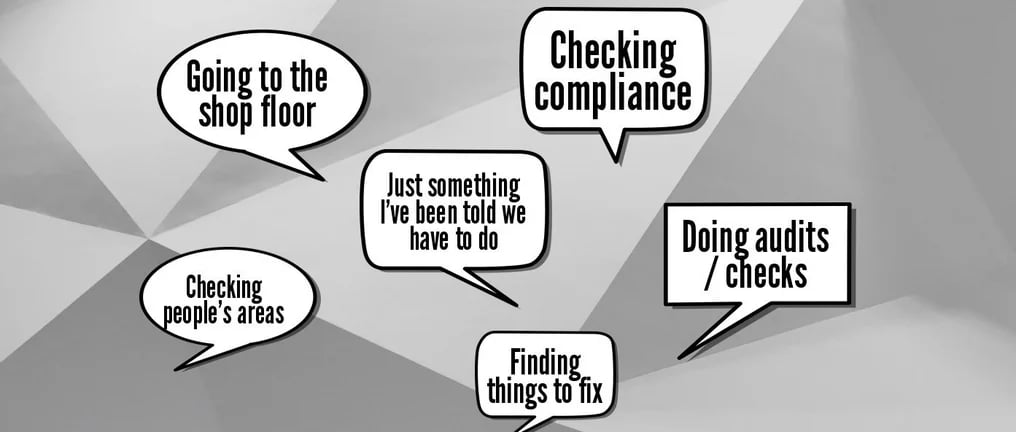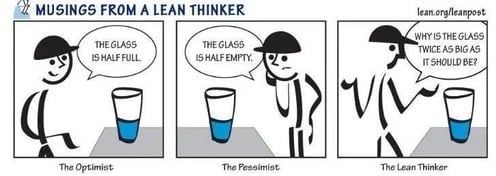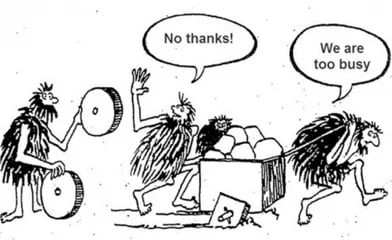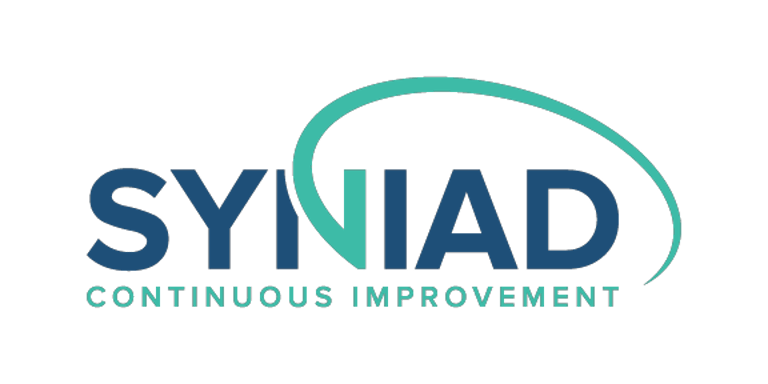Common "Gemba" Mistakes
The word Gemba is a word heard a lot in 'improving' organisations, often to the dismay of many workers. We often find it has become another one of those 'lean tools' that we just have to do because... we have to. So what does it mean? Why has it become a chore? Lets begin to explore how perhaps the word Gemba can be so easily misunderstood.
METHODOLOGIES
I'm assuming that if you're reading this, you've heard the word Gemba before and are probably thinking either; "Yeah, I relate to this!", or "Do people really hate Gemba?". Perhaps there is a third option that you're new to the world of CI and are dipping your toes into the politics of 'lean' and 'CI' phrases. Regardless, the common theme we see, is that the organisations that see it as a chore are also the ones probably not using it for its real intention.
It's useful to know that Gemba, Genba, Go See, and Genchi Genbutsu are used as synonymous terms - but focussing too much on the literal translations ultimately takes away from learning. For this article, the semantics is going to be ignored - the important bit is, what are you actually doing when you say you are going to the Gemba? No matter which terminology you use, when I ask this question, I tend to get these responses:


And herein lies the problem, if your intent before starting is misdirected, then the output will always be misdirected. After hearing these types of answers, the follow-up question I usually ask is "And do you enjoy it or learn a lot when going to the Gemba?" - to which the answer is either silence or "not really".
Going to the Gemba is not about fixing things. In the words of Toyota Chairman Fujio Cho, “Go see, ask why, show respect”. The whole point of Gemba is to:
See the reality of a process with your own eyes.
Challenge and disprove your assumptions and opinions.
Show respect for those doing the work.
But despite this, we commonly see how an organisation's Gemba can be completely the opposite. As such, I've tried to compile some common mistakes we see across many organisations when it comes to going to the Gemba.


When you check people, you make Gemba about fault finding and person blaming rather than improvement. Whether you directly blame people or not, it's hard to get people engaged in continuous improvement if they feel threatened by being at fault for something.
Whenever you treat people or human error as the problem, you also admit that you can't improve the system that people operate in. A bad system will beat a good person every time. Humans are prone to error. We make mistakes. We lose motivation when other things occur in our life. So why focus so much on the person rather than challenge the system around them?
Someone being malicious and purposefully disrupting work is different - but we often get the lines between natural human variation and malice, very confused. If you want to disrupt CI engagement in an organisation, just blame people when it wasn't intentional.
Focus on people, rather than the process


Are you going to be seen or to go and see? [Gemba Walks: Are You Going To See or To Be Seen? - Lean Enterprise Institute]. If you ask yourself "What is the point of this walk?" and you don't know the answer, or the answer is "because I have to", then I'd also question why you're doing it in the first place.
Any cultural transformation - this includes any tools, philosophies, or behaviours within it - should start with "What is the problem I am trying to solve?" that is in line with your businesses 'true north', which relies on understanding what a problem really is. The purpose of your activities should be situational - dependant on the problem you are trying to solve. Going to the Gemba is a vessel to help understand the inner workings of your system from the people who do the work.
If you have no purpose in going to the Gemba, then why are you going? You'll find the implications of doing this is far more damaging than you'd realise, and you'll likely just raise concerns in those you are observing.
Not having a specific purpose


"There's something in a walkway / on their desk, move it."
"They haven't labelled this as per 5S, that's a non-conformance."
"They're not following the instruction."
If you've heard any of these phrases, then you know you've seen how easy it is to turn Gemba into "nit-picking". Are you trying to make Gemba about Improvement or Compliance?
Point at the pallet in the walkway not in the allocated storage location as much as you want, the bigger question is - why is your inventory so high that you've had to put pallets anywhere else in the first place? It's a much harder question to answer, but forces you to look at your systems in more detail.
It's easy to just see a non-conformance and immediately fix the problem (for it to always come back on the next Gemba walk), as opposed to understand what in the value stream led to the issue in the first place. Learn about the systems people are operating in, show respect for the work they are doing. Understand more about the process and challenge your assumptions. This leads to the next mistake...
Using it to check 'compliance' or 'adherence'


Going to the Gemba is not about identifying solutions. It's being able to agree on what the problem is in the first place. You can't find a solution if each person has a different interpretation as to what the problem is. When you go to the Gemba with a need to have actions at the end, you will inevitably become the hammer, and everything is a nail. You will be encouraging jumping to solutions without fully understanding the work people do and how it connects to the bigger picture for your customer.
It is an opportunity to learn more, if you're not learning, what are you doing there? You may be reinforcing that you're only there to be seen and fault find - even if you had the best of intentions.
As opposed to truly understanding exactly what the problem is, fixing things on the spot or immediately jumping to action forces people to react based on emotions and assumptions. You know this is happening when each time you go back out to the Gemba, the same issues keep re-appearing or moving somewhere else. Stop fixing, and start learning.
Fixing things on a Gemba walk


It's typical for a lot of organisations to work with a silo mentality. When your view is only ever of separate processes, you miss how each step is interconnected, and what your customer feels at the end of it all.
You may have 1 particular area that has performed incredibly well. Perhaps the leaders in that area have developed their improvement schemes and are reaping the benefits. The problem is, your customer still feels the pain of your whole system. Improve just 1 process as much as you want to, all you are doing is creating more Mura (unevenness) and Muri (overburden) holistically. We always talk about Muda, but rarely about Mura and Muri - which you'll see when you look at the bigger picture.
Without understanding the full value stream, you may be moving or creating waste in someone else's process. This is dangerous, as it's often invisible to many and gives the impression you're improving. Always remember that all improvement should be in line with your businesses true north, so everyone is moving in the same direction and goals are aligned across processes.
Not going to understand the whole value stream


If there is one thing we can all agree our brains are incredibly good at doing (even if you might disagree), it's making mistakes, and jumping to conclusions.
Gemba is a learning opportunity, not a fixing opportunity. The more you fix, the more you can guarantee you're either jumping to conclusions, or not showing respect for the people doing the work. That's not to say Gemba can't have resulting actions, but be very careful in going to the Gemba with a solution mindset.
Giving answers as opposed to asking questions


This is a very common occurrence at the Gemba, identifying a problem and immediately giving a solution to the problem. The second you tell someone to do something, you remove all motivation for them to own the action.
Every time you solve problems your team could solve, you weaken them. I often say the journey is more important than the answer. Enable your people to walk the journey themselves then you're not only solving a problem, but they're becoming better problem solvers. Imagine teaching a child to walk, you get them on their feet and give them a little nudge or encouragement to move forward, and part of the process is them falling over, this is how we learn! The learning journey is more important than the end result at this stage.
I was once told by a director that when doing Gemba walks, it's good to be able to 'lead the witness' so that they get to the solution you wanted them to... which I adamantly disagree with. Not only is it a disrespect of your people, but you're also robbing them of the opportunity to become better problem solvers. You can't continuously improve if your organisation isn't enabled to problem solve and learn through experimentation.
Giving solutions to the people that do the work


I know that this complaint is one that everyone has heard at some point. Typically I find myself debating this point with practitioners, but this is one I have to reinforce - but in a slightly different way.
Usually, when practitioners make this point, they assume that the audience is in full control of the repercussions of stopping their usual tasks. It's easy to say stop and improve, even though the same person is only judged on numbers at the end. Once again, a bad system will beat a good person every time. Most people would love to be able to improve their work, but simply telling them to do so without the ability to make that change - or step back from "hitting the numbers" - is always going to create dismay. The mindset has to change throughout the entire organisation, starting with leadership [See Organisation Leaders - Two Options for Improvement Leadership (i4excellence.co.uk)].
Not having time to go to the Gemba
The fact remains that we focus too much on hitting the numbers, but continue to have rework, defects, poor deliveries, complaints, and lots of downtime at every step. I have always been of the view that the most important asset in your lean library, is Andon. Stop the line and build your leadership and culture for this to be the natural way of thinking.
Variation increases over time, stop and understand the problem you need to solve now, rather than constantly picking up after all the failures in your process. It requires the thinking to change from "We come here to work." to "We come here every day to improve the way we work." Gemba is a foundation to all of this! It's the first step to see what is actually happening, so that we can stop, and face the problem.
"On a trip to an ED at Nemours Children’s Hospital in Wilmington DE, a nursing director told my visiting group she spends over half her day in gemba. The visitors were floored by this and asked about emails, meetings and all the other non-value added work that consumes leadership’s day. She responded by saying, “I am out working with staff to problem-solve in real time and negating the need for emails around the problem and meetings or committees to work on the problem. By doing this it has freed me up and given me time to focus on what’s important in my areas.”
An excerpt from "Too Busy to Walk the Gemba" - Lean Enterprise Institute


I commonly get shown by CI Organisations, how they are continuously improving, how they apply all the "Lean tools", and how well they are doing. Whilst they're telling me, I am often gazing in the background wondering why the workers are running around tirelessly trying to deal with faults. Inventory on the floor is incredibly high, or in the office, paperwork is stacked to the roof on each person's desk.
This is why Gemba is all about understanding the problem, not jumping into solutions. This is why it's important to develop your people to be able to see waste, not just tell them to fix it. "No problem is a problem". Don't shy away from problems in your system. When you ask "What are we trying to achieve?" we can then begin to ask "And why can't you achieve it effectively?".
This is why whenever I am consulting with organisations, they seem surprised that I don't see Lean as a "toolbox" that solves problems. They are tools that help us understand what the problems are to begin with. Lean is the science of failing.
Hiding or ignoring problems
When we encounter a problem, going to the Gemba is the mindset we have that starts the journey of to learn more about it.




